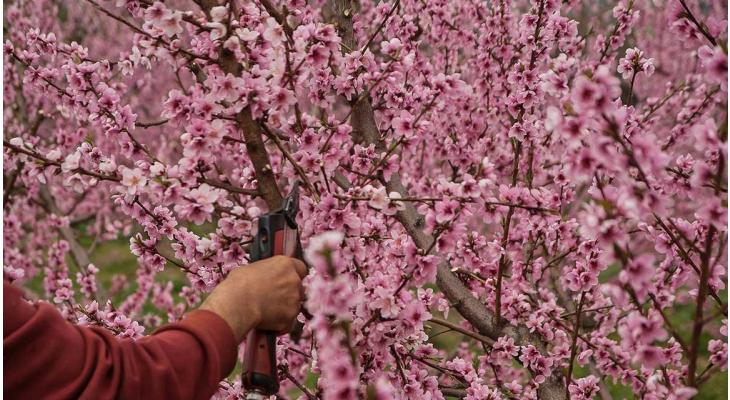It’s spring and that means pruning season has begun for most hedge plants. To keep your hedge in good shape, it is advisable to cut it back at least once before summer begins in mid-June. What garden tools are suitable for cutting back a hedge? You can find out here.
Pruning conifer hedges
Conifers are very popular hedge plants. Especially hedges of thuja and yew can be found everywhere in Europe, but other conifers such as the mock cypress and Leyland cypress are also very popular. Since conifers have a very dense growth habit and small needles or scales, it is good to cut the hedge as close as possible. A well-trimmed conifer can be a nice straight hedge or a more rounded hedge. With the right technique, even topiary is an option for some conifers. So for creative amateur gardeners, a conifer hedge is a nice challenge.
To keep the hedge as dense as possible, it is impractical to use small pruning shears. The larger the area you can cut at once, the easier it is to get the hedge nice and straight. A large hedge trimmer is best for this task. However, the best option is an electric hedge trimmer. It looks like a chainsaw with big teeth, and it basically works like a clipper: the blades glide past each other quickly, cutting the hedge in all places at once.
Cutting your conifer hedge this way, has another big advantage: it’s easier to cut superficially. Most conifers don’t grow back on the old wood, which means that pruning too thoroughly can leave bare spots in the hedge. That’s why it’s also important to trim your hedge back regularly – especially fast-growing conifers like Leyland cypress – so it doesn’t get too wide. Yews are the exception to this rule: they always grow back well and are therefore less prone to pruning mistakes.

Hedges with large leaves
The above tips are ideal for conifers and can also be used for other plants with small leaves, such as the boxwood or privet. A beech hedge or a hornbeam hedge can also be trimmed well with a larger hedge trimmer or electric garden shears. The leaves are cut off, but the plant recovers quickly. However, this method is not suitable for every hedge plant. For example, do you have a cherry laurel hedge? Then it is really better to spend a little more time and attention on pruning and use smaller shears.
The cherry laurel has large, leathery leaves and is a beautiful evergreen plant. Many people plant a wide hedge of, for example, Cherry Laurel ‘Rotundifolia’ or the narrower Cherry Laurel ‘Caucasica’ to give their garden a beautiful and imposing green border. The large leaves give the cherry laurel its characteristic look and it would be a shame to cut them in half when pruning. If you use a large pair of scissors and cut the hedge straight, this can hardly be avoided. So it is better to use smaller scissors and cut the branches one by one.
Although this may sound like endless work, in practice it is not so bad. The cherry laurel grows quite quickly and in the spring often gets long branches that clearly protrude from the hedge. So it’s not that hard to tell which branches need to be cut. By cutting the branches one at a time, you prevent the leaves from being cut through and getting a brown edge. This will make the hedge look much nicer. This method is also suitable for plants such as Japanese aukube and laurel snowball.
Informal hedges
When cutting back informal hedges, it depends a lot on what your idea of the hedge is. Most informal hedges consist of deciduous plants that generally recover well from pruning. For many deciduous plants, it is best to cut them back between March and September. For radical pruning, such as to rejuvenate the plant, winter is the best time of year, when the plant is dormant. Which garden tool is best for this depends somewhat on your own preferences.
An informal hedge often has a more open structure and is therefore easier to cut back with small garden shears. This gives you more control over which branches to trim. With flowering hedge plants, it’s also easier to make sure you don’t cut off too many buds, which of course would be a shame. If you have a large informal hedge, for example as a boundary, then precise pruning with small secateurs can take a lot of time. Electric pruning shears might be a more appropriate tool in this case.
If you have a flowering hedge, it is often advisable to cut out the faded flowers as well. This often makes the hedge plant bloom more profusely (immediately or the following year) and can sometimes even extend the blooming season. Cutting flowers also works best with small pruning shears. Do you have a garden with many different types of plants? Then it is convenient to have various garden tools for pruning in the house.


